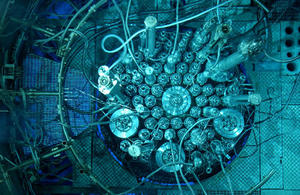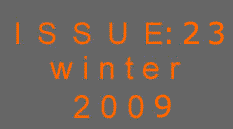
Global medical isotopes crisis highlights alarming lack of production facilities
By Frank Deconinck
Last autumn saw the emergence of a major worldwide crisis in the availability of medical radioisotopes - more specifically in the production of Mo-99/Tc-99m generators for diagnostic nuclear medicine (see also ENS NEWS issue 14, 2006).
I will shortly analyse the causes of the shortage and point to necessary long-term measures to avoid future crisis, but first I will give an update on the current situation regarding the current production of medical isotopes and their diagnostic usage.
When highly enriched U targets are irradiated in a high flux reactor, a number of fission products are created. Among them is Mo-99, which has a half-life of 66h. Radioactive decay of Mo-99 produces Tc-99m, a pure gamma emitter (140 kEV) with a half-life of 6h. By separating Mo-99 out of the U targets, Mo-99/Tc-99m generators ('cows') are produced and shipped to hospitals worldwide. Tc-99m is used in about 80% of all diagnostic nuclear imaging procedures, corresponding to several million examinations yearly in Europe alone.
Currently, the irradiation of the U targets is performed in only 6 (MTR) reactors: the NRU reactor in Chalk River, Canada; the HFR in Petten, in the Netherlands; the BR2 in Mol, Belgium; the OSIRIS in Saclay, France and the SAFARI in Pelindaba, South Africa. All are more than 40 years old. They account for the production of more than 90% of the available Mo-99.

The separation of the Mo-99 from the targets is performed at 4 centres: at MDS-Nordion in Kanata, Canada; at Covidien in Petten, the Netherlands; at IRE in Fleurus, Belgium and at NECSA in Pelindaba, South Africa.
The Mo99/Tc-99m generators are then assembled and sold by a number of companies.
The NRU reactor produces about 40% of the required Mo-99. The three European reactors together produce about 35% and the remaining quantity is produced in South Africa and smaller producers. Given the operating schedule of the European MTR reactors involved, a coordinated European production calendar is fixed, ensuring a continuous production – provided, of course, that there are no incidents with the reactors or the processing facilities.
Last August, the HFR reactor in Petten was supposed to be operational. Maintenance was under way, as scheduled, at the BR2, OSIRIS and NRU reactors. However, due to the discovery of corrosion and possibly a small leak in the primary circuit of the reactor, the HFR was not restarted. Independently, an incident occurred at IRE, during which a significant quantity of Iodine-131 was released through a ventilation stack, luckily without any adverse health effect for the population.
Suddenly, no major irradiation facilities where available and one of the two European separation facilities was out of action. The remaining (Covidien) reactor was stopped because of lack of irradiated targets.
After a few days, production resumed in Canada, but mainly for the North American market. Thanks to the efforts made by the OSIRIS and BR2 reactors to irradiate a maximum amount of U targets, Covidien was able to resume operation in October and IRE in November. The HFR however, is not scheduled to restart before May 2009. Due to this crisis, hundreds of thousands patients were denied diagnostic imaging tests based on the use of the Tc-99m radioisotope. Some of the tests could be performed by alternative techniques, however, such as PET (see also ENS NEWS N° 14). Other tests were carried out using less adapted radioisotopes. The production of most, however, had to be postponed or cancelled.
The crisis points to the alarming lack of production facilities for producing medical isotopes. In Canada, the NRU reactor started operating in 1957. It was scheduled to close down in 2005. AECL, therefore, designed and constructed two reactors dedicated to isotope production, Maple 1 and 2, which were scheduled to be fully operational by that time. Due to design errors, operation of the reactors would have been unsafe. After several years of tests and design changes, the operation of the reactors was forbidden by the safety authorities in 2008 and the reactors are being dismantled. Due to this, the operating licence of the NRU reactor is expected to be prolonged after 2011, even though it is now one of the oldest reactors still in operation.
In France, OSIRIS will be shut down when the Jules Horowitz reactor becomes operational. There should, therefore, be no interruption in irradiation activities in France. In Belgium, the BR2 reactor is scheduled to operate at least until 2016 and there seems to be no technical reason to stop operation before 2020 at the earliest. At that time another multifunctional irradiation facility (MYRRHA or similar – see also ENS NEWS N°21) should be able to ensure continuous Mo-99 production. The Netherlands are in the process of designing PALACE to replace the HFR reactor.
A characteristic of the current isotope production scenario is that none of the irradiation facilities would be commercially viable thanks to isotope production alone. Hence, no private company are considering building and exploiting a nuclear reactor for isotope production alone. In short, the isotope production in Europe - and partly in the rest of the world - is mainly subsidised by the Dutch, Belgian and French taxpayers. In my opinion, it would be more than fair to share the cost of irradiation for medical isotope production at the European level, rather than allow taxpayers in the countries in question to continue footing the bill for the production of radioisotopes that make an absolutely essential contribution to global human healthcare.
|

